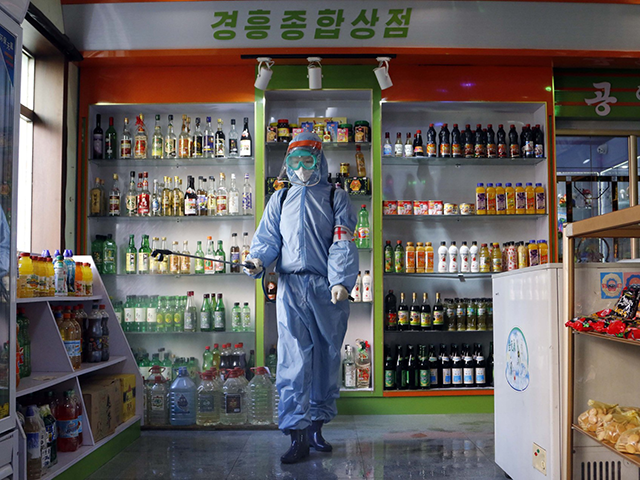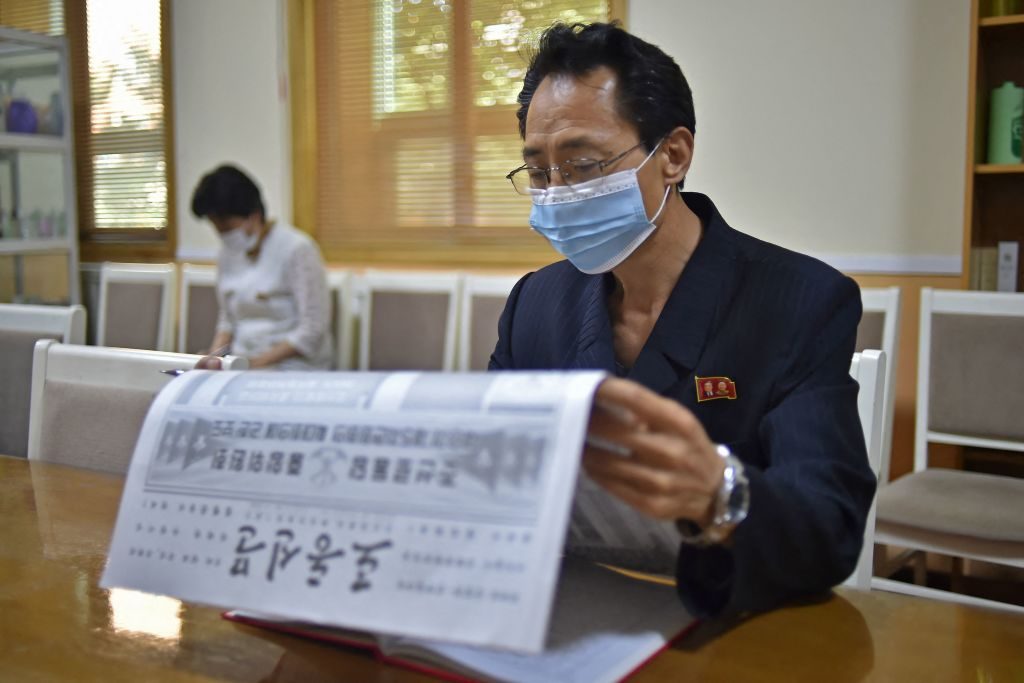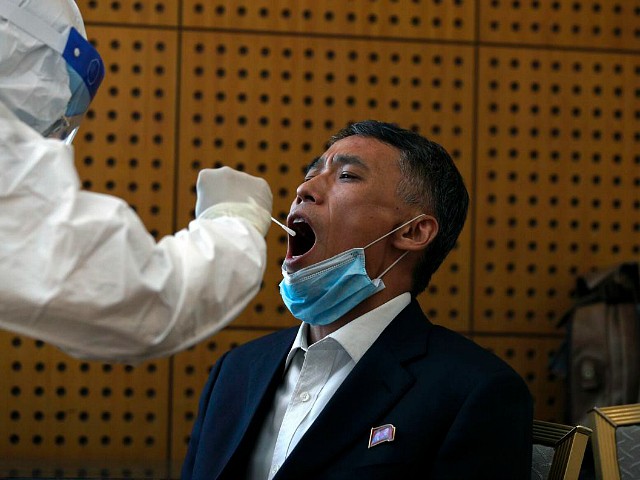The Rodong Sinmun state newspaper of North Korea published the results of an alleged “investigation” into the origins of the ongoing Chinese coronavirus epidemic in the country on Friday blaming the entry of the disease into the country on “alien things” from South Korea.
The communist regime in North Korea spent most of the past two years insisting that it had not documented a single case of Chinese coronavirus in the country, despite its notoriously porous border with China along the Yalu River. The Chinese coronavirus originated in Wuhan, central China, in late 2019 and areas bordering North Korea – such as the Liaoning and Jilin provinces – experienced severe surges in coronavirus cases repeatedly since the pandemic began.
While China has officially documented fewer coronavirus cases than South Korea – Seoul has as of press time over 18 million coronavirus cases – extensive reporting and admissions by Chinese officials indicate that the Communist Party of China has dramatically undercounted the number of coronavirus cases within its borders.
North Korean regime officials traced the infections back to Kangwon province, near the South Korean border, Rodong Sinmun claimed on Friday.
“The investigation results showed that several persons coming from the area of Ipho-ri in Kumgang County of Kangwon Province to the capital city in mid-April were in fever,” the state propaganda outlet relayed, “and a sharp increase of fever cases was witnessed among their contacts and that a group of fevered persons emerged in the area of Ipho-ri for the first time.”

An employee of the Kyonghung Foodstuff General Store disinfects the showroom in Pyongyang, North Korea, Wednesday, Nov. 10, 2021. (AP Photo/Jon Chol Jin, File)
The North Korean government, the newspaper claimed, had identified two individuals, “an 18-year-old soldier surnamed Kim and a five-year-old kindergartener surnamed Wi,” as the first to show coronavirus symptoms. The two had “contacted with alien things in a hill around barracks and residential quarters in Ipho-ri early in April,” the report claimed. It did not describe the “alien things” in any way.
The government advised soldiers and civilians to “vigilantly deal with alien things coming by wind and other climate phenomena and balloons in the areas along the demarcation line,” the South Korean border. Individuals, it advised, should tell government officials “instantly” if they see “alien things” so that “emergency anti-epidemic teams strictly remove those things.”
The Yonhap News Agency of South Korea suggested that the “balloons” described in the article were likely a reference to balloons carrying anti-communist pamphlets that activists often send across the border.

A masked staff member of the Pyongyang Cosmetics Factory, reads a news article on the 5th Plenary Meeting of the 8th Party Central Committee in the Rodong Sinmun newspaper in Pyongyang on June 16, 2022. KIM WON JIN/AFP via Getty Images)
South Korean anti-communists have used various innovative ways of sending messages and humanitarian aid to the North throughout the years including balloon pamphlets and water bottles filled with rice floating across the sea when the waves appear to be heading north,
Leftist former President Moon Jae-in of South Korea, who developed a friendly personal relationship with brutal North Korean dictator Kim Jong-un, outlawed the balloon campaigns and prosecuted activists for attempting to reach North Korean citizens.
“By linking the virus crisis with South Korea, albeit indirectly, the North appears to be seeking to stimulate public antipathy toward Seoul or leaflet-spreading activists as well as trying to discourage its people from picking up those materials,” Yonhap reported, citing “observers.”

A medical staff takes a swab from a North Korean official who was invited to the commemorating conference on the 70th anniversary of the Chinese army entering North Korea to resist the U.S. army, for the coronavirus test, at a hotel in Beijing. (AP Photo/Andy Wong)
The Chinese coronavirus spreads through “breathing in air when close to an infected person who is exhaling small droplets and particles that contain the virus” or otherwise interacting with infected droplets, according to the American Centers for Disease Control (CDC). Scientists generally agree that the virus spreads through humans or animals and not inanimate objects like food or food packaging, though the Communist Party of China has claimed, without evidence, that frozen food packaging from abroad may have initially brought the virus to Wuhan.
North Korea documented its first official coronavirus case in May and claimed to confirm upwards of one million coronavirus cases within a month. Months prior to that declaration, however, outside observers documented evidence of a potentially explosive coronavirus epidemic in the country, including frantic reports from Rodong Sinmun and other government outlets regarding the construction of new hospitals and healthcare facilities in the country.
Dictator Kim Jong-un delivered a bizarre speech in October 2020 that prompted speculation of a severe coronavirus crisis in the country. Kim, sobbing, apologized to the Korean people for having “failed” to protect the country.
“Our people have placed trust, as high as sky and as deep as sea, on me, but I have failed to always live up to it satisfactorily. I am really sorry for that,” Kim said in remarks that appeared in state broadcasters. “Although I am entrusted with the important responsibility to lead this country upholding the cause of the great Comrades Kim Il Sung and Kim Jong Il thanks to the trust of all the people, my efforts and sincerity have not been sufficient enough to rid our people of the difficulties in their life.”

COMMENTS
Please let us know if you're having issues with commenting.